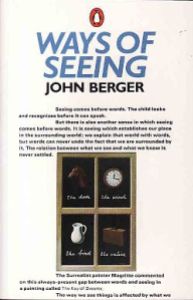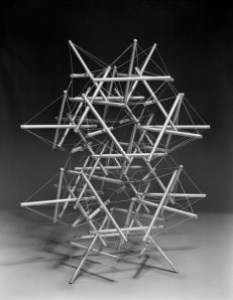This week I attended a Transtechnology research seminar on the introduction of moving image technologies and the convergence between medical visualisation. Before attending the discussion I was uncertain as to whether it would raise anything that would directly refer to my own efforts to reveal the full complexity inherent beneath the façade of the visual message. Fortuitously the seminar quite often deviated from the matter at hand and in its place surfaced debates on the subjective ontology of all nature of things. One particular quote caught my attention early on; Dr Martha Blassnigg cited a fictitious conversation by Hugo Münsterberg in which he considers that “science is an instrument constructed by human will in the service of human purposes. It is valuable, reliable, and indispensible instrument, but it is, like any instrument, an artificial construction, which has meaning only in view of its purpose” (Münsterberg 2006 p.9). Science is so often perceived as a certainty, an objective truth founded on empirical evidence yet this is indeed highly disputed and on closer inspection science originates from a branch of natural philosophy. Disregarding the infinite deliberations that could result from opening up such a debate on the nature of science, what fascinated me with this proclamation was the abstract predisposition of all humanity’s creations.
For the most part I found the experience of partaking in such discussions enlightening, but obtaining a corpus of Transtechnology research papers above all has provided me with a platform of information to explore further. Two notable texts that I have chosen to discuss are by Dr Martyn Woodward and Madalena Grimaldi due to their stimulating analyses of humanity’s extended mind and perception. Throughout my own work remains this prevailing notion that creative endeavours serve a purpose beyond aesthetic appreciation and instead the creative act is a catalyst for the externalisation of the conscious state, an extension of consciousness. In Woodward’s text he supposes the same ‘extended mind’ hypothesis and in doing so summons a debate on the extent to which artistic creation is entangled with the environment as part of a larger system. (Woodward 2013). In reading Woodward’s text I found a validation for the research I had been conducting prior to this week, at every juncture I noticed parallel assertions to my own, for example:
The ‘extended mind’ hypothesis is characteristically embedded within the concept of ‘autopoiesis’. This maintains that cognition, perception and action merge together within the relational, reciprocal system that includes the body and world. An autopoeitic system is defined not by its individual components (as separate entities), but by the processes and relations between the components.
Dr Martyn Woodward | Being Through Painting and Weaving: A Brief Commentary on Intuition.
Once I came to the conclusion that visual communication was an extension of consciousness akin to the primordial use of tools (technology) that facilitated hominids to reach beyond the parameters of the hand, I recognised the autopoeitic system was central to the regenerate evolution of the creative act. By identifying the creative act as a catalyst for consciousness we ought to consider perception, how the artist extrapolates their surrounding reality, not so much phenomena (material) but cognitive execution of the noumena (ethereal), in turn how then does the spectator interpret the subsequent work? Grimaldi comprehends that perception “allows us to apprehend a situation objectively when stimulated by the senses” yet I believe later insinuates the predisposition of noumena in its capacity to alter the ‘objective’ in stating “[perception] is an inherently ambiguous process, where perceptual discrepancies may arise in different individuals who experience identical stimulation” (Grimaldi 2013 p. 1). Bearing in mind the content of my previous two posts ‘Disobedient Objects’ and ‘Lost in Translation’, Grimaldi predominantly touches upon the fabrication of consciousness and how perception is reliant on the individuals past experiences, “this knowledge, derived from the past, can directly interfere with the perception of the present” (Grimaldi 2013 p.5).
GRIMALDI, M (2013) Illusions: The Magic Eye of Perception. Plymouth: Transtechnology Research.
MÜNSTERBERG, H (2006) The Eternal Life. New York: Cosimo, Inc. (Originally work published 1905)
WOODWARD, M (2013) Being Through Painting and Weaving: A Brief Commentary on Intuition. Plymouth: Transtechnology Research.


